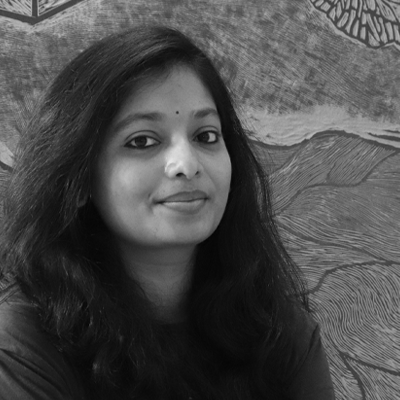The dark colors of my native soil and the vast span of the Krishna river fills the mind with nature’s overpowering sublimity. The deep silence of black soil and the pensive glow of river water enter the mind weaving their moving forms. Like all the elements in nature, the river also generously provides to the cities during its journey to the ocean. Rivers have built up great civilizations and act as the backbone of any prospering city. They carry memories, myths and stories within them. Ironically, human beings have turned the free-flowing river into thousands of drainage holes. Their alienation from nature has proven catastrophic as it creates dichotomies in the minds and threatens the notion of faith and unity of being in nature.
I feel that, nature is partitioned into fields. In the waters that flow down from Pune towards my hometown Satara, the land is filled with monocrop sugarcane plantations. Green as they seem, they exaggeratedly consume the river water. And waters is further diverted from rural life to feed the ever expanding urban areas. Repetition of the word ‘partition’, cannot but connect to the traumatic memory of the partition of India and Pakistan. A line drawn in red somewhere in a white landscape divided the Indus river and its tributaries that flowed from the mountains through the plains. Not only the land and its people, but we partitioned a river too.
Drawing from these references, my woodcut works oscillate between two main themes: the flow of a river, its wild and awake animal life, and the theme of partitioning, siphoning off water supplies, draining, diversion and fragmentation of natural life. In one of the images, a stag sits encased within cubist boxes that are of the size of its body — a kind of unnatural curtailing, a replica of its natural self in miniature, but entirely artificial — recalling a game sanctuary or natural reserve. The theme of partitioning is depicted in a woodcut that shows a ‘Kashmiri’ style hand-carved wooden freestanding folding-screen. Replicating topographical and architectural drawings, the work represents architectural spaces divided between various spatial arrangements such as forts, house-plans, and land-grids.
Share this:
- Click to share on Facebook (Opens in new window) Facebook
- Click to email a link to a friend (Opens in new window) Email
- Click to share on X (Opens in new window) X
- Click to share on LinkedIn (Opens in new window) LinkedIn
- Click to share on WhatsApp (Opens in new window) WhatsApp
- Click to share on Telegram (Opens in new window) Telegram



4 Comments
Seema gondane
Excellent work dear sucheta … matured concept ..very congratulations …my best wishes always with you dear.. Keep it up.
Pramod Gondchar
Dear Sucheta, the Subject it’s is Source of Life of Human Being.
It is very well understood, presented and Explained.
The Importance and Necessity of River for Life and Nature is Nothing without it.
Thank you for putting this in another view infront of us.
I acknowledge you for having your concern for Nature and Life.
Regards & Best Wishes.
Pramod Gondchar
RAHUL GANESHRAO KENE
Nice one
Gauri Gandhi
very well-cut.